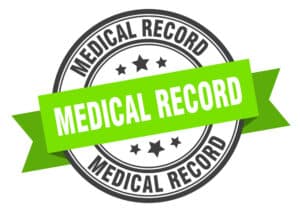
What is a Medical Record Review?
A medical record review determines the status of an injured employee’s post-injury recovery and promotes best practices within a claim team. It includes reviewing medical records generated following a work injury to determine if the care provided is reasonable, necessary, and causally related to the work injury.
This process can be implemented at any point following a work injury where the employee is off work and reviewing ongoing medical care. The goal is to review trends and weed out waste. Now is the time to implement this process in your claim management program.
Click Link to Access Free PDF Download
“8 ‘Think Outside the Box’ Tactics to Settle Workers’ Comp Claims”
Reducing Excessive Cost Through Medical Record Review
There are several goals of a medical record review. The goal should always be to drive a claim toward settlement and reduce excessive costs.
- Expose Duplicate Charges: Part of the review process includes looking at the billing statements associated with care being provided to the employee. Sometimes, a healthcare provider could have accidentally double-billed an insurance carrier for services. Failing to review charges for services defeats the purpose of a medical record review.
- Conformation of a Treatment Plan: The existence of a treatment plan demonstrates the medical care being provided and recommended is reasonable and necessary. When reviewing records, it is vital to scrutinize instances where the health care provider is copying and pasting the subjective complaints from one visit to the next and the care being provided. This is a common practice when chiropractic care is the main form of treatment. Demand the treating doctor to provide a plan if one is not present.
- Object and Deny Unnecessary Medical Care: All members of the claim management team need to keep an eye out for medical care that does not relieve the work injury’s effects. This unnecessary care must be objected to promptly. Consultation with defense counsel should also occur to develop a litigation plan to fight high costs that keep an employee out of work.
- Identify Pre-existing Conditions or Injuries: The pre-existing condition or injury is something injured employees tend not to disclose or minimize. A close review of medical records can assist in uncovering prior injuries and medical care. These same medical records can also be a treasure trove of areas to explore when defending a claim.
- Identify Gaps in Medical Care: Gaps signal red flags in Workers’ compensation claims. It can signal such things as malingering, doctor shopping, etc. A review of medical records can help uncover these problem signs and lead to other roads of investigation and discovery.
- Uncover Other Discpencies: A close review of medical records can also uncover discrepancies in the employee’s prior statements related to the origins or mechanism of injury. This is vital information for denying a claim or asserting a retroactive denial.
Using medical records review services internally or through a service provider can accomplish many things. The ultimate goal is to assist the claim handler in making better decisions and driving a claim toward the final settlement.
Challenges in Medical Record Review
There are many challenges when reviewing medical records in a workers’ compensation claim. This can include not having a complete set of medical records. A healthcare provider can also destroy medical records as provided under state law or by accident. Medical records generated in the past can also be in handwriting that is difficult to review or is in illegible handwriting. These are factors to consider when dividing to use such a review.
Conclusions
Medical records review can be helpful when defining a workers’ compensation claim. When using one, it is crucial to understand the goal as it can be costly and time-consuming to create. Notwithstanding this barrier, there are a number of benefits that can promote efficiency within a program and drive claims toward settlement.

Contact: mstack@reduceyourworkerscomp.com.
Workers’ Comp Roundup Blog: http://blog.reduceyourworkerscomp.com/
©2023 Amaxx LLC. All rights reserved under International Copyright Law.
Do not use this information without independent verification. All state laws vary. You should consult with your insurance broker, attorney, or qualified professional.

















